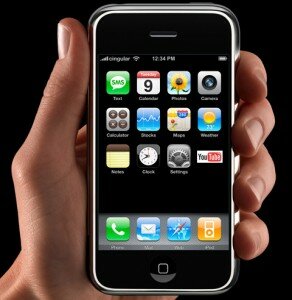Are Limits of Eye Tracking Real?
 I just read an amusing, if not somewhat cynical post from the blog at Think Eyetracking. It’s a fairly negative argument when it comes to the application and technology of eye tracking in general, but it brings about some interesting points that I’ve heard echoed in different eye tracking conversations over the years.
I just read an amusing, if not somewhat cynical post from the blog at Think Eyetracking. It’s a fairly negative argument when it comes to the application and technology of eye tracking in general, but it brings about some interesting points that I’ve heard echoed in different eye tracking conversations over the years.
There was recently a rumor going around that Apple planned to incorporate Tobii Technology’s eye tracking platforms into their new tablet. With last week’s debut of the iPad, this doesn’t appear to be the case, at least for now. The post, which was written beforehand, basically says not to hold your breath.
When it comes to multi touch technology, the advantages for a typical computer user are far more compelling than eye tracking options. This is true for a number of reasons, one being that your eyes are constantly moving. At any moment, the eye makes tiny, quick movements, darting with variation between different objects within your field of view. But we don’t notice this as we’re interacting with the world. When you go for a run, the scenery appears stable for the most part, not bouncing up and down with the exaggerated movement your legs create. But, as the post points out, when a cameraman is running (say, through Basra, Iraq in the middle of a shootout), the image bounces up and down with camera shake. The human brain conveniently smooths out and creates a seamless scene, but a camera (and therefore, eye tracker) doesn’t necessarily have this ability.
The tiny movements the author describes are to help you see properly. As a beam of light or information hits the back of your eye, a chemical reaction is caused that sends a signal to the brain where the information is then interpreted. But once the reaction has seized, it takes a little time for the chemicals to recharge before that part of the eye can see again in full detail. The post goes on to say that, due to this variance, a margin of error is inherently introduced into eye trackers, and this would make eye tracking perhaps not as accurate as simply touching a spot on the mobile device.
Still, I think progressing technology can and should overcome this obstacle at some point, as it seems more like a technical problem than anything specifically unavoidable. A better argument, however, is the idea of single touch and multi touch – also brought up in the post.
One of the true innovations of new hardware/software, particularly Apple, is multi touch technology, allowing users to pinch and rotate their fingers to zoom with their iPhone or Macbook’s track pad. On the other hand, eye tracking is really a single touch interaction, as the eye cannot look into two places at once. Fingers allow for variation and multi touch ability, and now that consumers have experienced and grown accustomed to multi touch, this could prove a deterrent for potential users considering eye tracking as anything but a supplemental solution, say, for gaming or communication for the disabled. But as far as the single touch nature of eye tracking, is this also a technological limitation? Or is it something based more on our own physical limitation? It’s a question for the industry, and perhaps one that should be further explored.
Related articles:
- Eye-Com Eye Tracking Drive Simulator Studies Driver Inattention
- Eye Controlled Video Games? Better Late Than Never
- Eye Tracking Technology as Memory Aid
- Iris Recognition is Advancing. Could It Help Eye Tracking?
- Is Apple Adding Eye Tracking to Their Tablet?
- Eye Tracking: EyeWriter Featured in SXSW Conference
- Augmented Reality and Pupil Tracking go Hand-in-Hand to Merge the Virtual and Real World
- Eye Tracking: Facebook and LinkedIn Usability
- Pupil Tracking in Airport Security: Can Body Language Indicate Terrorist Intent?
- The Latest in Eye Tracking Web Usability Research pt1
-
Bartek
-
Bartek
